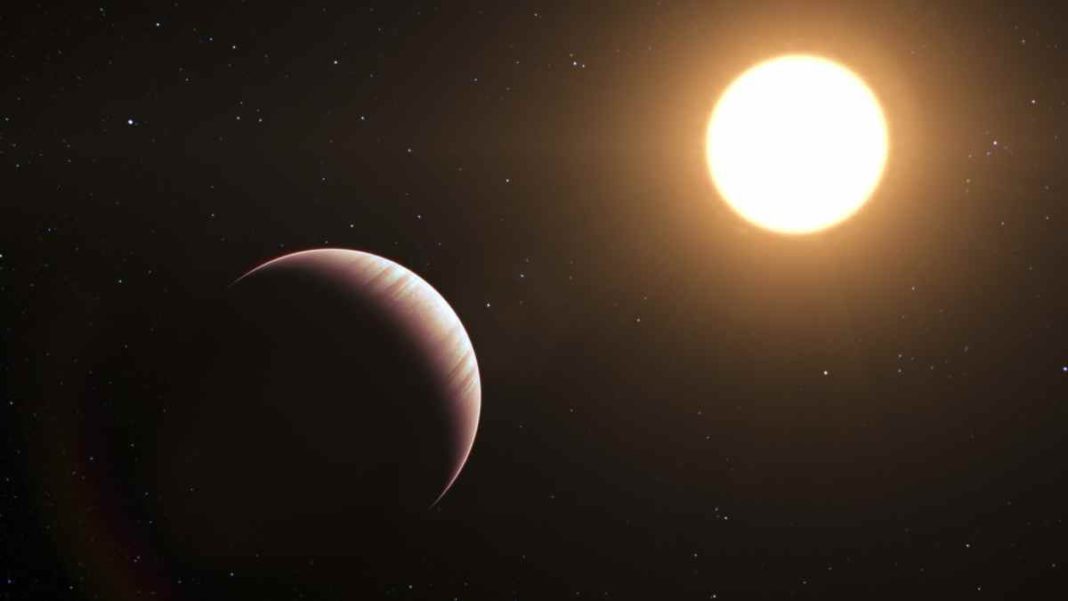UNITED STATES: In a groundbreaking discovery, astronomers have identified a scorching exoplanet located over 260 light years away from Earth that possesses a mesmerizing mirror-like reflectivity.
The exoplanet, named LTT9779b, has captured the attention of scientists as it reflects an astounding 80% of the light it receives from its host star, making it the most reflective planet ever observed beyond our solar system.
These findings were made possible through observations made by Europe’s exoplanet-probing Cheops space telescope.
Exoplanet LTT9779b, approximately the size of Neptune, orbits its star in a mere 19 hours, defying expectations for a planet of its size. Its close proximity to the star results in extreme temperatures of around 2000 degrees Celsius on the side that faces the star.
Such scorching conditions were initially believed to prevent cloud formation. However, the presence of metallic clouds on LTT9779b has puzzled astronomers.
Researchers from France’s Cote d’Azur Observatory, including Vivien Parmentier, a co-author of the study published in the journal Astronomy and Astrophysics, compared the cloud formation process to the condensation that occurs in a bathroom after a hot shower.
The planet’s atmosphere becomes oversaturated with a stream of hot metal and silicate, leading to the formation of metallic clouds. These clouds, acting as a shield, reflect incoming light and prevent the planet’s atmosphere from being blown away by the intense stellar radiation.
The reflective properties exhibited by LTT9779b have drawn comparisons to Venus, the brightest celestial object in the night sky after the Moon.
This unique characteristic sets the exoplanet apart from others in its class and opens up new avenues for studying the composition and behavior of distant worlds.
However, LTT9779b’s extraordinary reflectivity is not the only factor that makes it an outlier. It also resides in an area known as the “Neptune desert,” where planets of its size are not typically found.
In this region, the intense radiation from the star is known to strip away the atmospheres of planets, leaving behind only rocky cores. Against all odds, LTT9779b has managed to maintain its atmosphere thanks to the protective properties of its metallic clouds.
“This is a planet that shouldn’t exist,” remarked Parmentier, highlighting the contradictory nature of LTT9779b’s characteristics. The findings challenge conventional understanding and offer a tantalizing glimpse into the diverse and complex nature of exoplanets.
Maximilian Guenther, project scientist for the Cheops mission, compared the metallic clouds to shields depicted in the popular science fiction franchise Star Trek, stating that they prevent the atmosphere from being eroded away.
Also Read: Pee to Purity: NASA’s Achieves 98% Water Recycling Triumph on the ISS



